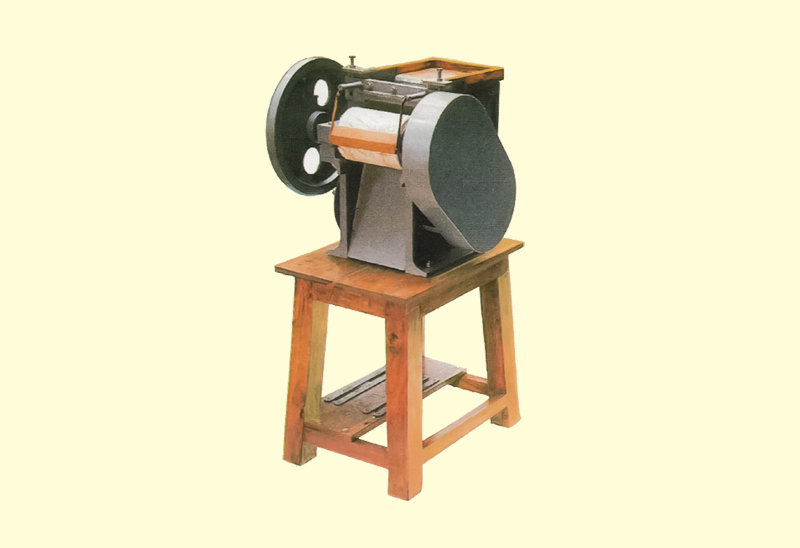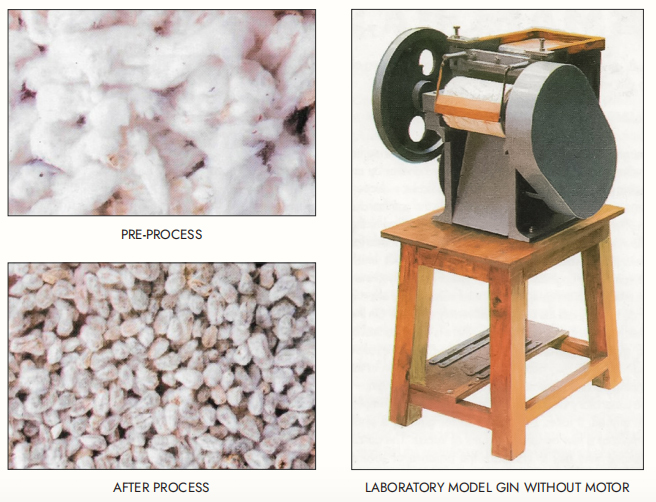

One of the Chief criteria of a cotton breeder in selecting a new strain for further propagation is its ginning percentage. He has to ascertain this value for hundreds of varieties of small samples of seed cotton every year as accurately as possible in a short time. Next the cotton grower could assess the monetary return from the cotton raised by him by knowing its ginning percentage, besides its yield per acre or hectare. Further more in cotton markets where transactions are done, on the seed cotton (Kapas), the lint content of the kapas is estimated by the broker by the usual hand and eye judgement, which is open to large personal errors.
In all these cases the need for a small gin which could effectively gin a small sample of Kapas rapidly is emphasised. In order to meet these demands a small gin of the Macarthy type has been designed at the Cotton Technological Research Laboratory in which several improvements have been incorporated. This gin is simple and efficient and robust in construction and is easily worked by hand or electricity. It has already attracted the attention of the three categories of persons mentioned above. A large number of these gins have been supplied to cotton experimental stations, seed- cotton marketing committees, ginning factories and cotton merchants.

A diagrammatic sketch of the gin is shown in PLATE 1 & PLATE 2 The former being a sectional view and the latter indicating the driving mechanisum. This gin is essentially of the Macarthy type. It consists of a cylindrical leather roller R of 7” length. Against this roller seed-cotton is fed by means of the feeder board F. A bunch of fibres caught by the grooved surface of the leather roller is held between the roller and the fixed knife K1. This knife presses against the roller over its entire length. As the roller revolves the fibres are pulled forward while the seed which is prevented from moving with the fibres by the fixed knife is beaten upwards by the moving knife K2.
This K2 has a blunt edge and is as long as the fixed knife K1 and moves parallel to its surface very close to it. Thus the lint is pulled out from the seed and is carried forward by the roller from which it is stripped by the stripping bar B. The delinted seed drops down through the grid G. Different sizes of the grid slots are used for ginning different sizes of seeds. Three such grids possessing different slot sizes are provided. Besides the distance between the front edge of the grid and the fixed knife can be varied by means of the adjustment J. The seeds dropping are conveyed through the chute H to the box X. The moving knife is actuated by the crank shaft C which is mounted on ball bearings L.
These bearings are housed in the eccentric E. This provides easy adjustment of the overlap i.e. the maximum height of the moving knife edge over that of the fixed knife. It is to be adjusted according to the staple length of the cotton to be ginned. The feeder board F also operates by the reciprocating action of the moving knife. The roller and the crank shaft are connected to each other by means of the chain N and the gears G1 and G2 through the idle pulley. The gin could be worked either by an electric motor or by hand. For the former case the motor is connected to the crank shaft by means of the V-groove pulley W2 as will be seen from Plate 1 and for the latter this V- groove pulley is pushed nearer the gin frame and a large fly wheel with handle W1 is attached to the roller shaft, as shown in Plate 2. W2 helps smooth working of the gin when operated by hand.